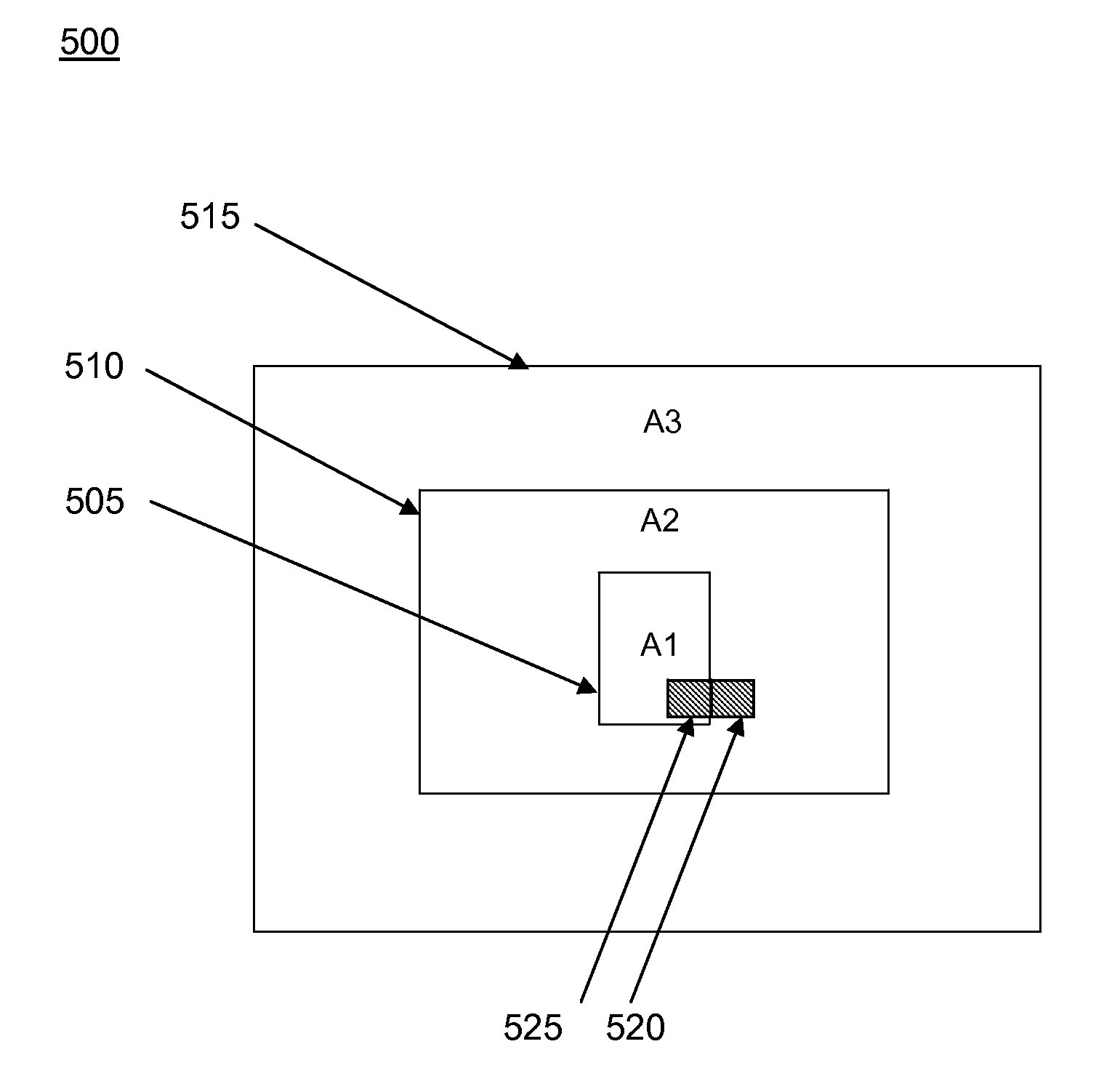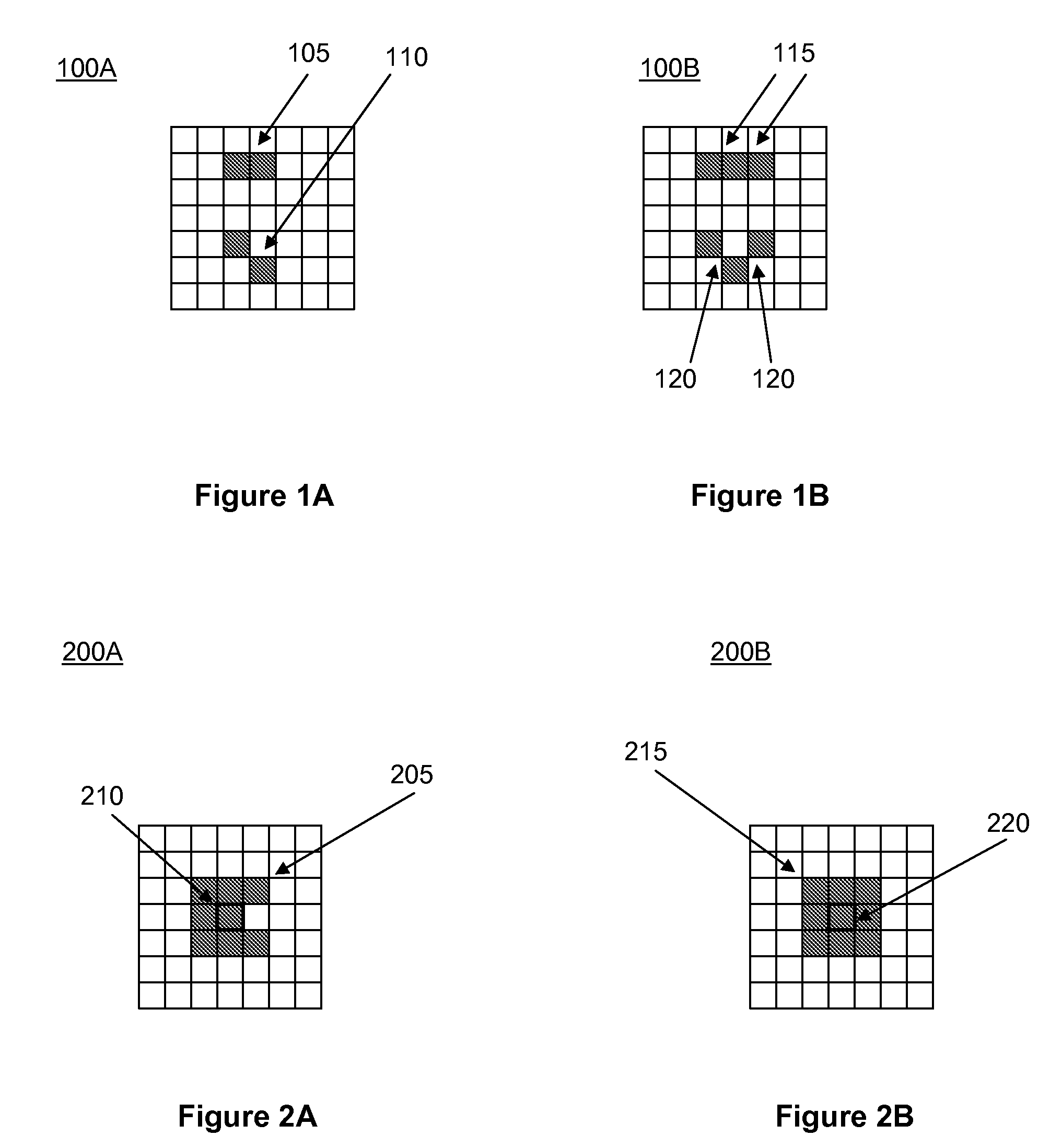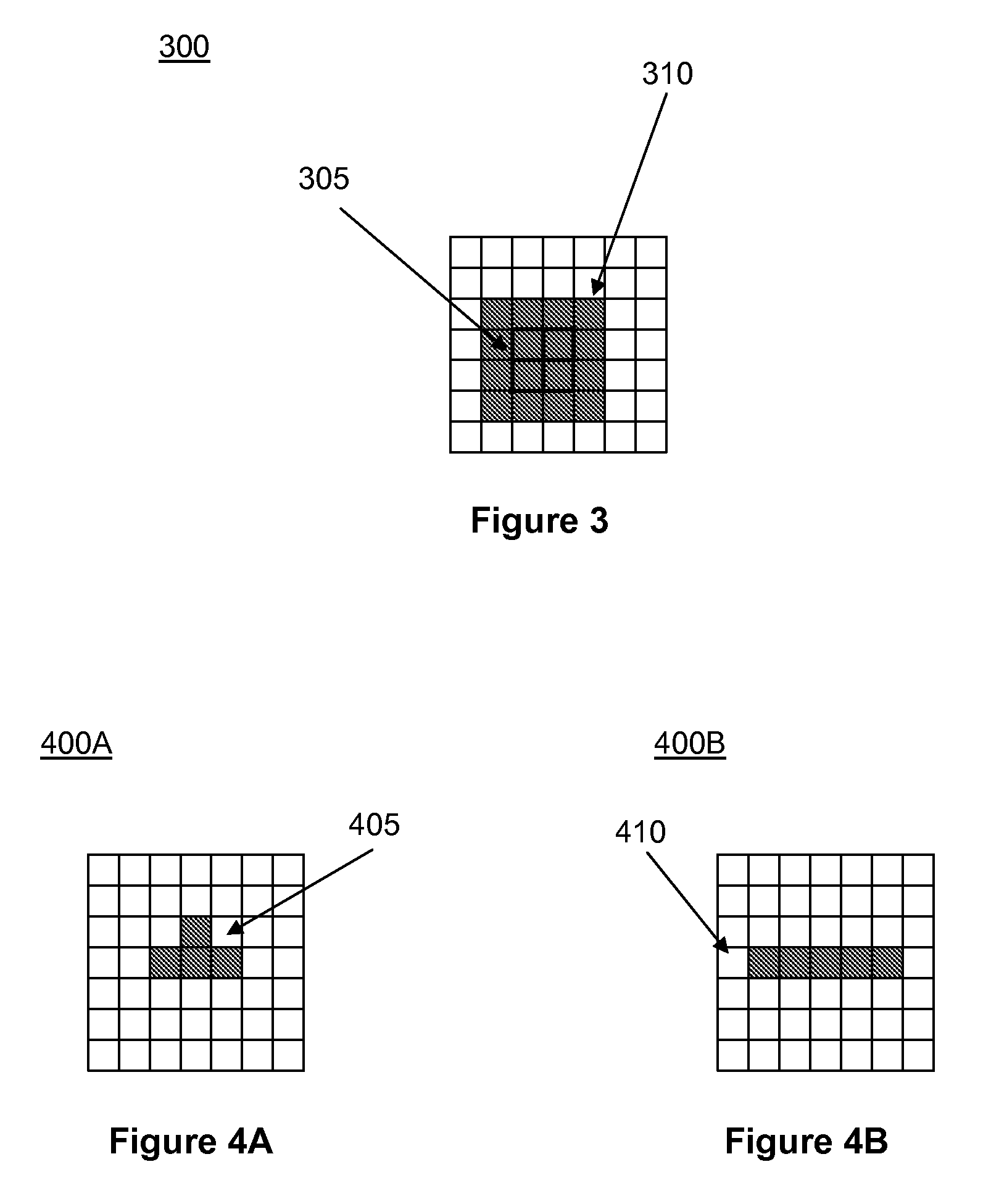Real-time pixel substitution for thermal imaging systems
a technology of thermal imaging and real-time pixel substitution, applied in the field of imaging systems, can solve the problems of large deficiency in subjective image quality, small portion of these pixels may degrade, and unit being returned for repair at significant cost to either the customer or the supplier, so as to suppress the expression of a defective pixel, prevent these degraded pixels, and eliminate distractions
- Summary
- Abstract
- Description
- Claims
- Application Information
AI Technical Summary
Benefits of technology
Problems solved by technology
Method used
Image
Examples
example 1
[0032]Referring to FIGS. 2A and 2B, the center pixel 210, and center pixel 220 each is only classified as a cluster, since in each case it is adjacent to less than two good pixels. The remaining seven pixels 205, or eight pixels 215 (around the border) would only count against the total number of bad pixels.
example 2
[0033]Referring to FIG. 3, the four pixels 305 in the center are each considered a bad cluster, since none of them is adjacent to at least two good pixels. Thus, the four pixels 305 in the center would add four to the total number of clusters found in this region of the image. The remaining pixels 310 (around the border) would count against the total number of bad pixels only. Other arrangements of bad pixels not meeting the rules identified above would be classified only as bad pixels, counted against the area in which they fall.
example 3
[0034]Referring to FIGS. 4A and 4B, these groupings of pixels are not considered pairs or clusters since they meet neither definition. In this case, the bad pixels count against the total number of bad pixels in the area. If an area boundary cuts through a grouping of pixels, then the bad pixel count statistics are updated based on the number of bad pixels that fall into each area.
[0035]Operability requirements can be defined by certain features and rules. The following nine features and rules are described next.
[0036]Feature 1. Referring to the embodiment of FIG. 5, there shall be a maximum of three image areas as shown in the following figure. Each region shall be treated independently. That is, area A1 shall not be considered to be included in A2. Neither shall A1 nor A2 be considered included in A3 in this embodiment. The number, size and location of the image areas A1, A2, and A3 should be considered exemplary only as well as the fact that they should be treated independently. ...
PUM
 Login to View More
Login to View More Abstract
Description
Claims
Application Information
 Login to View More
Login to View More - R&D
- Intellectual Property
- Life Sciences
- Materials
- Tech Scout
- Unparalleled Data Quality
- Higher Quality Content
- 60% Fewer Hallucinations
Browse by: Latest US Patents, China's latest patents, Technical Efficacy Thesaurus, Application Domain, Technology Topic, Popular Technical Reports.
© 2025 PatSnap. All rights reserved.Legal|Privacy policy|Modern Slavery Act Transparency Statement|Sitemap|About US| Contact US: help@patsnap.com



